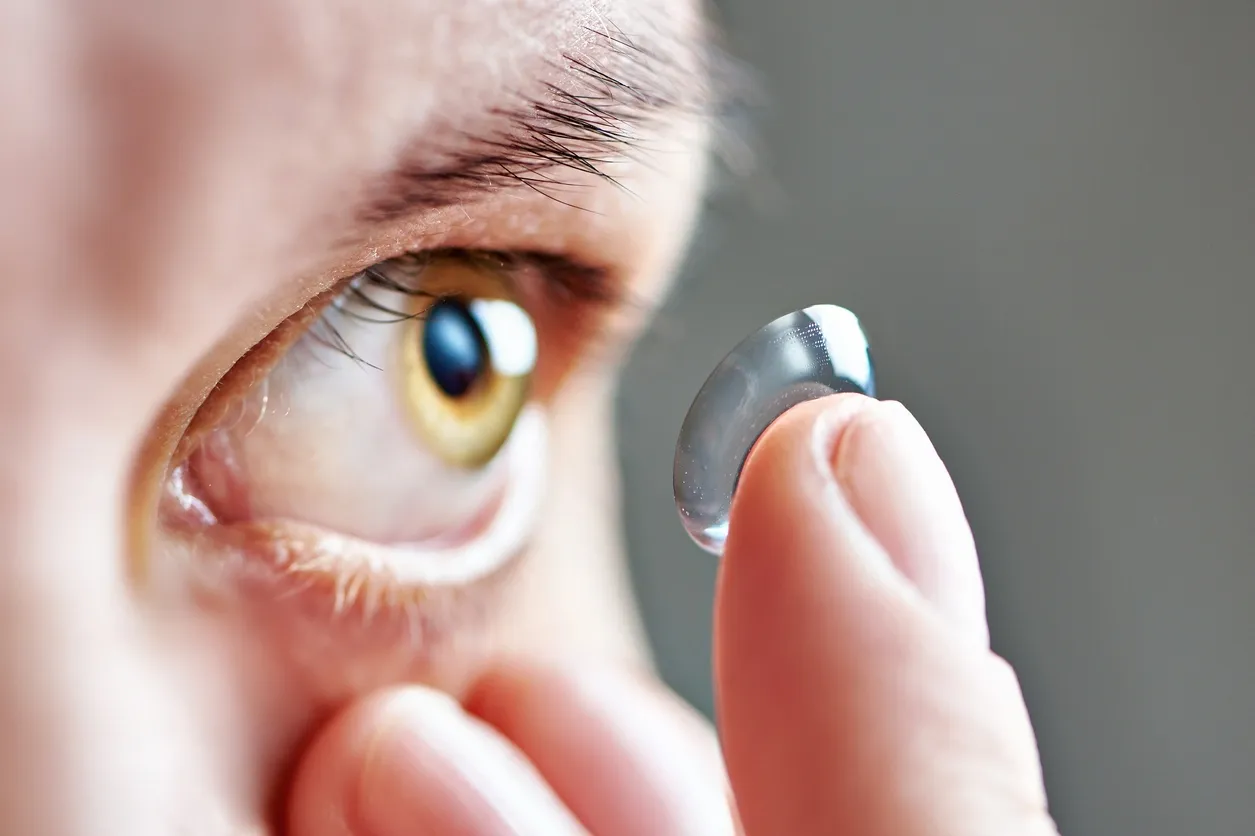### FAQs on Keratoconus
1. **Why does Keratoconus happen?**
Keratoconus is caused by a combination of genetic predisposition and environmental factors such as eye rubbing, sleeping with pressure on the eyes, PCOD, and ocular allergies. Nutritional deficiencies, especially in vitamin D, may also contribute.
2. **Can Keratoconus be reversed?**
No, the disease cannot be reversed. However, its progression can be successfully halted and managed with treatments such as contact lenses, topography-guided custom ablation treatment, collagen cross-linking (C3R), and Intacs.
3. **Is surgery necessary for Keratoconus? What happens if I don’t get treated?**
Yes, treatment is essential. If not addressed with proper evaluation and timely intervention, Keratoconus can lead to permanent vision loss.
4. **How can I know if I am at risk for Keratoconus?**
Some warning signs include frequent changes in eyeglass prescriptions, astigmatism, hormonal imbalances, and difficulty adjusting to new glasses even after multiple attempts.
5. **How is Keratoconus diagnosed?**
Keratoconus is diagnosed through a clinical eye examination and corneal topography.
6. **I can see clearly and have no issues, so why should I treat my Keratoconus?**
Keratoconus is a slow-progressing disease, and by the time you notice a significant drop in vision, the treatment options may become limited.
7. **At what corneal thickness can C3R be performed?**
Generally, C3R is performed on corneas with a thickness above 450 microns. However, with specialized techniques, it can be done on corneas as thin as 370 microns.
8. **What is C3R or Collagen Cross-Linking?**
Collagen cross-linking (C3R) is a treatment that strengthens the collagen in the cornea by applying riboflavin eye drops and exposing the eye to ultraviolet light. This process increases the number and strength of the sulphur bonds in the cornea, similar to adding cement between bricks, making the cornea more stable.
9. **Is collagen cross-linking the only way to stop Keratoconus progression?**
Yes, C3R is currently the only proven method to stop the progression of Keratoconus. It is highly successful in most cases.
10. **Will collagen cross-linking improve my vision?**
No, C3R is designed to stop the progression of the disease, not to improve vision. Visual rehabilitation can be achieved with treatments like TCAT (topography-guided custom ablation), spectacles, Rose K lenses, scleral contact lenses, ICL, clear lens extraction, and Intacs, depending on your condition.
11. **What is PRK Extra?**
PRK Extra is a technique for patients with thin corneas. It involves correcting vision using PRK technology followed by collagen cross-linking to strengthen the cornea.
12. **Can the corneal thickness be increased?**
No, once corneal thickness is lost, it cannot be restored.
13. **What tests are needed before collagen cross-linking?**
Before undergoing C3R, it’s important to identify the underlying causes of your Keratoconus. This includes tests such as a basic haemogram, vitamin D levels, and hormone assessments. Consulting a gynecologist to rule out conditions like PCOD or thyroid disorders may also be necessary.
14. **How much time should I take off work for collagen cross-linking?**
It is recommended to have at least 10 days of leave. Since the surgery is planned, you can schedule it to coincide with a period when you’re already planning to take time off.
15. **Is collagen cross-linking painful?**
The procedure itself is painless. However, after the anaesthesia wears off, you may experience irritation, pain, and swelling for 1-2 days, and a feeling of heaviness in the eyes for 3-4 days. This is normal and indicates that the treatment is working. Painkillers and anaesthetic drops are usually prescribed for relief.
16. **What can I expect after my C3R procedure?**
You may experience blurry and fluctuating vision for 2-3 weeks. If you’ve opted for the TCAT procedure, you may notice an improvement in vision clarity within a week. If only collagen cross-linking was done, there will be little to no immediate improvement in vision.
17. **Should I opt for TCAT or TPRK along with collagen cross-linking?**
If your cornea supports these additional procedures, it’s advisable to opt for them along with C3R. These procedures can not only stop the progression of the disease but also improve your visual quality in the same sitting.
18. **Can pregnancy worsen Keratoconus?**
Yes, pregnancy can exacerbate Keratoconus due to hormonal changes. It’s recommended to undergo C3R at least three months before planning a pregnancy.
19. **What are Intacs?**
Intacs are small, biocompatible rings that are implanted into the cornea to help reshape it. They improve visual acuity and help with the fitting of scleral or Rose K contact lenses.
20. **What is TREK?**
TREK is a modern treatment that involves topography-guided removal of the corneal epithelium using an excimer laser in PTK mode. Like TCAT, it helps regularize the corneal shape.
21. **What is the cost of collagen cross-linking (C3R)?**
The cost of C3R typically ranges from INR 55,000 to 65,000, depending on various factors.
22. **What is the cost of TCAT treatment?**
The cost of TCAT treatment usually falls between INR 45,000 to 55,000.
23. **What is the cost of TREK treatment?**
The cost of TREK treatment is approximately INR 30,000 to 35,000.
24. **What is the cost of Intacs?**
Intacs typically cost around INR 90,000 to 1,00,000 per eye.
25. **Can collagen cross-linking and other Keratoconus treatments be done on both eyes the same day?**
Yes, treatments for both eyes can be done on the same day. This reduces the cost and inconvenience of multiple surgeries. Since no overnight hospital stay is needed, patients are usually discharged the same day.



